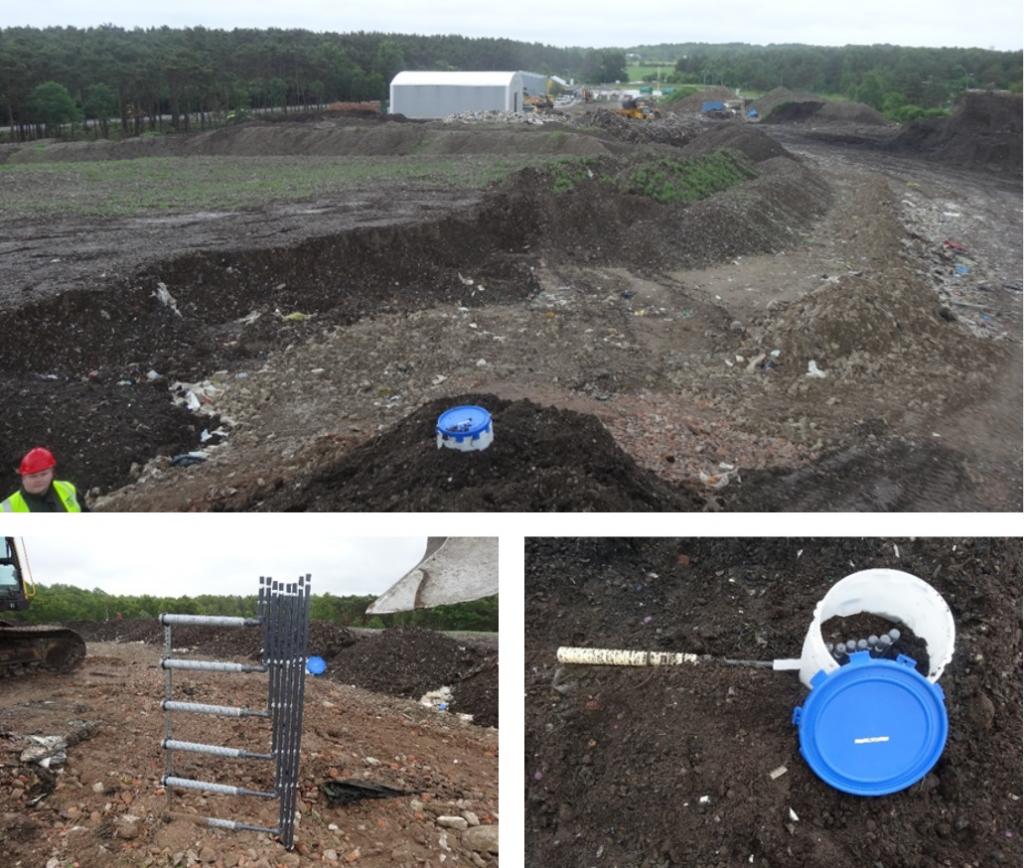Innovative use of biocovers, which utilise fine fraction from landfill mining, presents a compelling model for methane control in Estonia
As urbanisation and population growth continue to rise globally, effective waste management becomes an increasingly critical challenge. Landfills and dumpsites, a component of waste disposal, are significant sources of methane (CH4), a potent greenhouse gas with a global warming potential 28 times greater than that of carbon dioxide (CO2) over a 100-year period.
In 2016, solid waste treatment and disposal accounted for approximately 1.6 billion tonnes of CO2 equivalent (CO2e) emissions worldwide, a figure projected to reach 2.38 billion tonnes by 2050 if current waste management practices persist. Addressing methane emissions from landfills is therefore vital for mitigating climate change.
When municipal solid waste (MSW) is initially disposed of in landfills or dumpsites, it undergoes aerobic decomposition, producing minimal methane. However, as anaerobic conditions prevail, methanogenic activity leads to prolonged methane emissions, even from closed landfills.
Read more: Why dumping plastic waste in landfills is a much bigger issue
Without intervention, global methane emissions from landfills are expected to rise significantly. In India, urban areas generate approximately 160,000 tonnes of MSW daily, with around 50-60 per cent being biodegradable. A substantial portion of this waste is disposed of in dumpsites, contributing to the country’s methane emissions.
In 2016, methane emissions from India’s waste sector accounted for 14 per cent of the nation’s total emissions, highlighting the urgent need for effective mitigation strategies. Methane, which is highly flammable, is the primary cause of landfill fires due to its uncontrolled release. The recent fires at the Ghazipur, Bhandwari and Madurai dumpsites underscore the urgent need to curb methane emissions.
Current methods for methane reduction in the waste sector include source segregation, organic waste diversion, scientific treatment of MSW fractions, construction of sanitary landfills and dumpsite remediation. However, a recent study proposes an innovative and sustainable approach of microbial methane oxidation system (popularly called as biocover) to control fugitive emissions of methane from an old dumpsite at full scale in Estonia, Europe.
Mohit Somani, lead author of the study, explained that the fine fraction from landfill mining was used to create biocovers, which effectively controlled methane emissions by oxidising methane into CO2. Somani is assistant professor, School of Infrastructure at Indian Institute Of Technology, Bhubaneswar, Odisha. His research focuses on assessing the feasibility of landfill mining at Indian dumpsites, remediating contaminated soils and controlling methane emissions from landfills.
The innovative use of biocovers, which utilise the fine fraction from landfill mining, presents a compelling model for methane control in Estonia. Before the implementation of biocovers, surface methane emissions from the landfill were significant, with around 350 tonnes of CH4 released annually. However, after biocovers were implemented, methane emissions were drastically reduced, demonstrating the efficacy of this approach.
Pictorial demonstration of biocover installation

Top: Placement of gas distribution and biocover layer; Bottom left: Sectional view of a gas collection well at various depth; Bottom right: Top view a gas measurement well after covering with biocover. Source: Performance of Biocover in Controlling Methane Emissions from Landfill:A Decade of Full-Scale Investigation / Kriipsalu et al, 2023
“The Estonian case study underscored the potential of using fine fraction from landfill mining for biocovers as a sustainable solution for methane control, especially in small to medium-sized landfills,” added Somani. The reduction in the percentage of CH4 over a decade is quite evident from the results. Researchers in the United States are actively working on identifying novel biocover for achieving zero emissions from landfills.
Profile showing CH4 degradation after installation of biocover

Source: Performance of Biocover in Controlling Methane Emissions from Landfill:A Decade of Full-Scale Investigation / Kriipsalu et al, 2023
Can it be applied to Indian dumpsites?
India has more than 3,000 legacy dumpsites that continuously generate methane and are prone to fires. Although landfill biomining is underway at many of these sites, its implementation and long-term sustainability are highly challenging. At the current rate of biomining, it will take several years to completely eliminate these dumpsites.
In the meantime, solutions for controlling methane emissions must be sought. Additionally, the bulk of the reclaimed material from landfill mining called fine fraction is difficult to repurpose due to the high concentration of contaminants in it.
Read more: Methane from Indian dumpsites — a missed opportunity & potential climate pollutant
At most of the dumpsites, the fine fraction is stockpiled on-site. The scientific application of the fine fraction ranges from road construction to land reclamation and as a filler material for low-lying areas.
The quantum of fine fraction generated is huge and its disposal is one of the major challenges faced by urban local bodies. One prominent method currently in practice for disposing of the fine fraction is its utilization as a soil enricher or disposal in low-lying areas. Given that they are recovered from historically contaminated sites, these fractions may contain heavy metals and organic pollutants.
These heavy metals have the potential to accumulate in plants and animals, leading to bioaccumulation, where the metals move up the food chain.

Implementation of a biofilter at an old landfill in Europe. Photo: Martin Ressar, AS EG Ehitus, Estonia
Somani highlighted the challenge of determining whether the fine fraction can effectively control methane emissions, particularly given diverse climatic conditions. Exploring its feasibility in combination with gas extraction wells is warranted, he suggested. Additionally, identifying hotspots or areas with the highest methane emissions and covering them with biofilters could prove beneficial.
We are a voice to you; you have been a support to us. Together we build journalism that is independent, credible and fearless. You can further help us by making a donation. This will mean a lot for our ability to bring you news, perspectives and analysis from the ground so that we can make change together.
















































